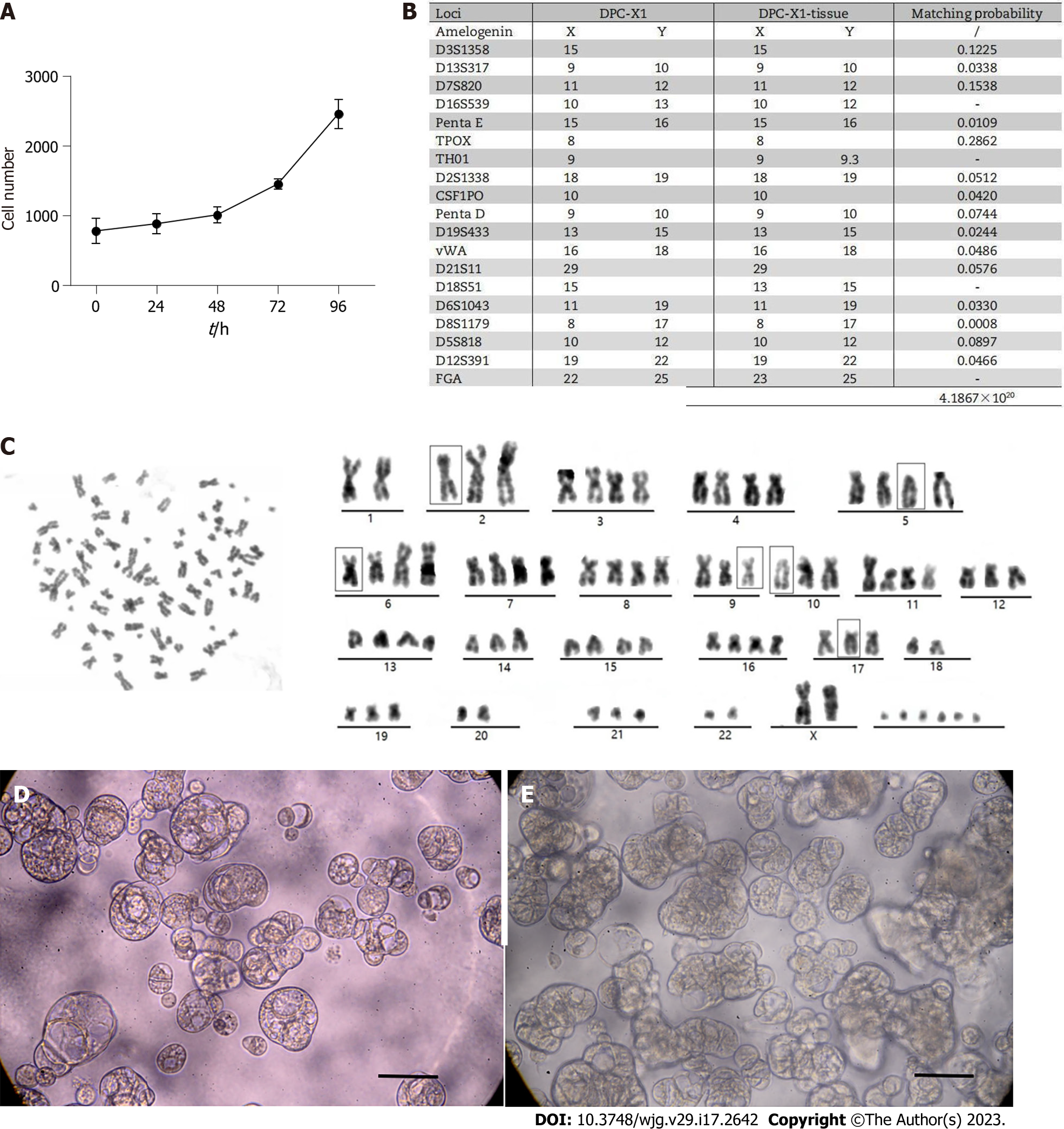Copyright
©The Author(s) 2023.
World J Gastroenterol. May 7, 2023; 29(17): 2642-2656
Published online May 7, 2023. doi: 10.3748/wjg.v29.i17.2642
Published online May 7, 2023. doi: 10.3748/wjg.v29.i17.2642
Figure 2 DPC-X1 population doubling time, short tandem repeat detection, karyotype analysis and Organoid culture.
A: DPC-X1 growth curve; cell doubling time is 48 h; B: The likelihood ratio between the short tandem repeat results of DPC-X1 and the primary tumor tissue is 4.1867 × 1020. The cells are not contaminated by other cell lines; C: Karyotype analysis shows that DPC-X1 cells are mainly sub-tetraploid, with large differences in chromosome number and morphology. The representative karyotype is 80, XX del (2) (q32) del (5) (p12) del (6) (q24) inv (9) del (10) p (13) del (17) p (12); D: Morphology of DPC-X1organoids after one week. The organoids are spherical or cystic in shape; E: Morphology of DPC-X1 organoids after two weeks. The organoids are spore-like or branch-like in shape. Scale bars: 100 μm.
- Citation: Xu H, Chai CP, Miao X, Tang H, Hu JJ, Zhang H, Zhou WC. Establishment and characterization of a new human ampullary carcinoma cell line, DPC-X1. World J Gastroenterol 2023; 29(17): 2642-2656
- URL: https://www.wjgnet.com/1007-9327/full/v29/i17/2642.htm
- DOI: https://dx.doi.org/10.3748/wjg.v29.i17.2642









